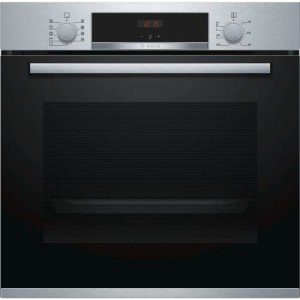The Rise of Built-In Ovens: A Seamless Integration of Functionality and Design
In the world of modern kitchen area design, aesthetic appeals and performance go hand-in-hand, and built-in ovens have become a popular choice for house owners aiming to raise their culinary spaces. These home appliances not only optimize efficiency however likewise add to a cohesive cooking area style that reflects personal style and taste. Let's explore what built-in ovens are, their advantages, and design factors to consider to keep in mind when planning your kitchen remodel.
What Are Built-In Ovens?
Built-in ovens, as the name suggests, are ovens that are integrated into kitchen cabinetry or walls, providing a structured look that stands in contrast to standard freestanding ovens. They come in different setups, including single, double, and even wall-mounted options, accommodating different cooking requirements and cooking area designs. Built-in ovens can be electric, gas, or perhaps steam, enabling versatility based on cooking choices.
Advantages of Built-In Ovens
Area Efficiency: Built-in ovens enable more efficient usage of cooking area area. By embedding the oven within cabinets or walls, you can maximize valuable counter space and develop a more open layout.
Looks: These ovens use a streamlined, contemporary appearance that can be customized to match the kitchen area's total style. They can be integrated with cabinetry surfaces and colors, developing an unified look.
Ergonomic Design: Built-in ovens can be put at eye level, making it simpler to monitor cooking progress without flexing down. This style consideration enhances the user experience, particularly for those with mobility problems.
Enhanced Functionality: Many built-in designs offer advanced features like convection cooking, self-cleaning alternatives, and clever innovation that enables remote operation. This flexibility can considerably improve cooking capabilities.
Worth Addition: Investing in built-in ovens is frequently viewed as an upgrade, including considerable resale value to the home. Prospective buyers are typically brought in to modern-day, properly designed kitchen areas with high-quality devices.
Style Considerations
When planning to incorporate a built-in oven into your kitchen area, a couple of important elements should be thought about:
Kitchen Layout: Assess the layout of your cooking area to determine where the oven will be most functional. The typical placements include under countertops, within high cabinets, or above a wall unit.
Style and Finish: Choose an oven that matches your overall kitchen area visual. Built-in ovens are available in numerous surfaces such as stainless-steel, black, or custom-made cabinetry panels. Matching your oven to your cooking area decoration makes sure coherence and visual appeal.

Size and Capacity: Built-in ovens can be found in various sizes, so it's necessary to think about how much cooking space you require. If you often host big events or family dinners, choosing a double oven may be advantageous.
Ventilation: Ensure that there is adequate ventilation within the kitchen area, especially if choosing a gas oven. Correct installation will assist to maintain air quality and cooking area comfort.
Smart Technology: For the tech-savvy house owner, think about built-in ovens with clever abilities that integrate with home automation systems. Functions such as remote tracking, pre-programmed recipes, and voice control can improve your cooking experience.
Conclusion
Built-in ovens are more than just cooking devices; they are an important part of the modern-day cooking area landscape. With inbuilt ovens as improved area performance, visual appeal, and improved functionality, it's no surprise that they are a favored choice for many house owners. By thoroughly thinking about the design, design, size, and innovation of your built-in oven, you can guarantee it complements your kitchen vision while delivering outstanding cooking efficiency. Whether refurbishing an old cooking area or designing a new one, built-in ovens stand at the forefront of mixing practicality with sophistication in home cooking areas.
